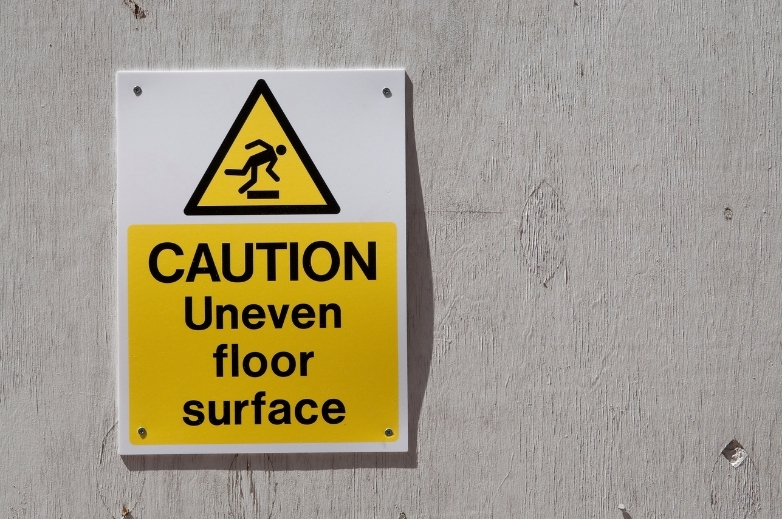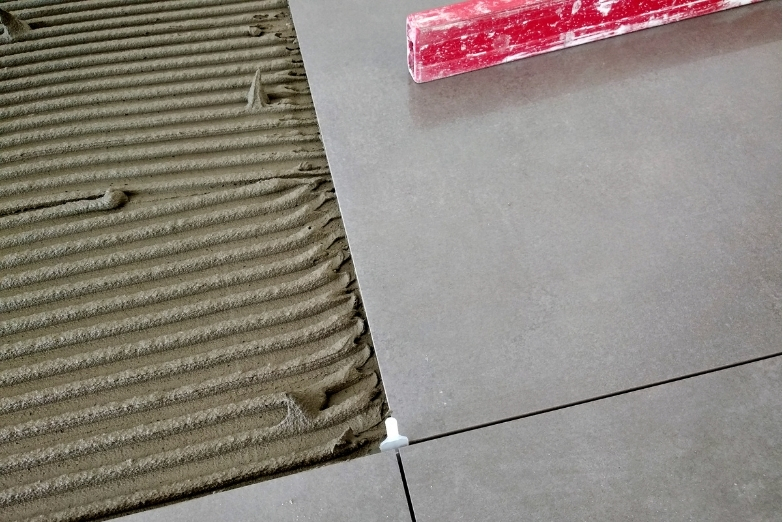If you’re asking, “Why is my floor tile cracking?“, you’re not alone. Cracking tiles are a common issue faced by many homeowners, and understanding the root cause is crucial for preventing further damage and making effective repairs. In here, we will see the 3 reasons why your subfloor tile is cracking.
Main Reasons Why Tile Floors Might Be Cracking
Let’s dive into the 3 main reasons why tile floors might be cracking and what you can do about it.
1. Bad Subfloor

One of the leading causes of cracked tiles is a bad subfloor. For tile floors to remain stable and durable, they need to be installed over a proper base. This typically means setting the tiles on mortar over a concrete board or directly on concrete floors. (Learn more about what is a subfloor.)
Why a Good Subfloor Matters
- Prevent Warping and Shifting: A proper subfloor ensures that the tiles remain stable and do not warp or shift over time.
- Even Surface: It provides an even surface, reducing the likelihood of tiles being unevenly supported.
If tiles are installed on a subfloor like plywood or another unsuitable material, the floor will inevitably shift and bend. This movement creates stress points that can lead to cracking tiles. Over time, as the subfloor moves and adjusts, the tiles, which are rigid and inflexible, cannot adapt to these changes, resulting in cracks.
Signs of a Bad Subfloor
- Creaking or Bending: If your floor makes noises or feels flexible underfoot, it might indicate a bad subfloor.
- Visible Gaps or Movement: Noticeable gaps between the tiles or visible movement when weight is applied.
2. Wrong Depth of Mortar

Another crucial factor in tile installation is the depth of the mortar used. The right depth of mortar ensures that the tiles adhere properly and remain level and supported. (Learn more about mortar bed thickness.)
Importance of Proper Mortar Depth
- Larger Tiles Need Thicker Mortar: Larger tiles require a thicker mortar layer to compensate for any irregularities in the subfloor or the tile backing.
- Avoiding Shrinkage: Thin mortars can shrink as they dry, causing the tiles to retract and crack due to the tension created during this process.
- Filling Gaps: Adequate mortar depth helps in filling any gaps and provides sufficient grip strength to hold the tiles in place.
If there’s not enough mortar, gaps can form underneath the tiles, leading to weak spots. These weak spots are susceptible to cracking, especially under pressure or impact.
Identifying Mortar Issues
- Loose or Hollow-Sounding Tiles: Tap on the tiles; if they sound hollow, there may be gaps in the mortar.
- Visible Cracks: Cracks appearing shortly after installation can be a sign of insufficient mortar depth.
3. Forceful Impacts

Sometimes, the reason for cracked tiles is as simple as an impact. The culprit might be something heavy that fell onto the tile floors – a heavy object might cause cracking if it lands in a spot that is already stressed with broken mortar or a weakened subfloor.
Understanding Tile Durability
- Weight Limits: Tiles are strong but not invincible. They can withstand a lot of weight, but there’s a breaking point, particularly if there’s an air gap beneath the tile.
- Air Gaps: Even small impacts will crack the tile if they hit an air gap underneath it.
- PEI Rating: The durability of tiles can be assessed using the PEI (Porcelain Enamel Institute) rating, which measures the tile’s resistance to abrasion and impact.
Examples of Forceful Impacts
- Dropped Objects: Everyday items like kitchen utensils, tools, or toys can cause damage if dropped with enough force.
- Heavy Furniture: Moving heavy furniture without proper precautions can lead to cracks.
Other Factors Contributing to Cracking Tiles
While the reasons mentioned above are the most common, other factors can also be responsible for tile cracking.
- Temperature Changes
Tiles are often exposed to wide differences in temperature, and this expansion and contraction due to varying heat levels can cause them to crack. When tiles in areas with large and variable temperature differentials are exposed to these conditions, they are more prone to cracking.
- Poor Installation
Improper installation techniques, such as not allowing adequate time for the mortar to set or failing to account for expansion joints, can result in cracked tiles.
- Structural Issues
If your house is subsiding with settling foundations, or if your space is racking with shifting walls, this could be transferred to the tile floors, leading to cracks.
Preventing and Repairing Cracked Tiles
Prevention Tips
- Ensure Proper Subfloor: Always use a suitable subfloor material and ensure it’s correctly installed.
- Use the Right Mortar: Follow manufacturer guidelines for mortar depth, especially for larger tiles.
- Handle Tiles Carefully: Avoid dropping heavy objects on tile floors and use protective padding when moving furniture.
Repair Strategies
- Replacing Cracked Tiles: Remove and replace cracked tiles with new ones. Make sure to fix any underlying issues first.
- Fixing Subfloor Issues: If the subfloor is the problem, you might need professional help to rectify it before reinstalling tiles.
- Adjusting Mortar Depth: For future installations, ensure the mortar is mixed and applied correctly to prevent gaps.
Conclusion
So, ask yourself what causes your tile floor to crack? Having this knowledge will help you plan appropriate repairs and take preventative measures to stop further damage. If the cause of your cracked floor is a bad subfloor, improper mortar depth, or forceful impact, follow the appropriate instructions to take actions that will effectively restore the beauty and optimal functionality of your tile floor. If you’re experiencing cracking tiles, consider these factors and take appropriate measures to restore and protect your flooring.
If you found this blog helpful, be sure to check out more insights on our other posts:
- Creative Flooring Design Ideas for Small Spaces
- The Role of Flooring in Interior Design and Home Decor
Discover innovative ways to enhance your home’s aesthetics and functionality with our expert tips and ideas.


